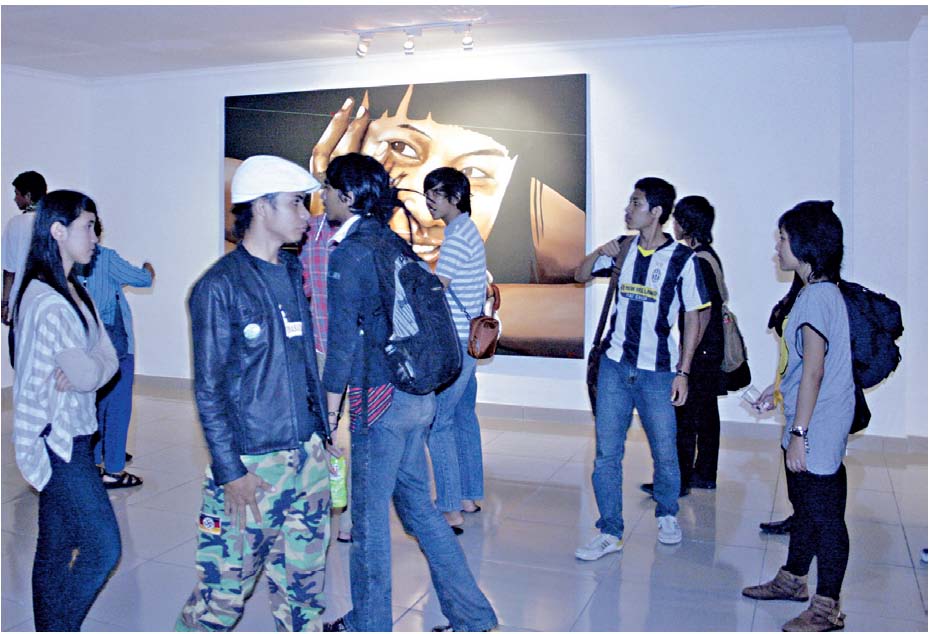Yaya Sukaya demonstrated his expertise in managing space and perspective.
Teks and Photo by argus firmansyah
Women’s faces in various styles, forms, expression and having a close-up dimension on canvas seemed to be telling us a story. There is a mystical ambience in the faces of the women appearing in various points of view. Happiness, sadness, loneliness, cheer, hope, sadness, confusion, and other emotions seemed to be expressed to the maximum.
On the other corner there is an installation. A prototype of a stage that is standing upright at the cat walk of models. There is only one complete figure, a nude figure that wafted out in the dark. Only a little light shone on that figure. While the others, are merely heads with frail and brittle faces.
The dilemmatic nuance of the paintings sneaked in quietly among the boisterous crowd visiting the opening of Yaya Sukaya’s solo exhibition entitled Close Up in hall C, Indonesian National Gallery (Galeri Nasional Indonesia), Central Jakarta, Thursday (12/3) evening.
For the first time Yaya Sukaya held a solo exhibition in the National Gallery. It was officiated by Amir Sidharta, a renowned curator and art critic. “ Yaya Sukaya does not use objects that has become icons, a popular practice among other visual artists. Hopefully this will become a new perspective in our current and future visual art world,” said Amir.
The phrase close up is generally used in photography techniques as well as picture and voice recording, exposing objects from a near distance without becoming too extreme. Presenting close up faces of women, Sukaya tries to elaborate his concern for contem-porary urban women and teenagers.
Chandra Johan, the exhibition curator, said that Yaya Sukaya’s paintings show his expertise in managing space and perspective. “Those faces represent the current life, with all shapes/forms responding to the life they are celebrating. Another essential thing shown by Yaya, is his strong spirit in creating his art,” said Chandra Johan.
Close Up is the representation of Yaya Sukaya’s maturity as an artist. His strong back-ground in interior design shown in the form of accurate calculation of line compo-sition, field, color, dimension as well as the quality of expression highlighted in his paintings and installations.
“In this exhibition all I wanted was to open up a discourse. Even collectors will not be able to tell whether it is a modern or postmodern work,” said Yaya Sukaya. ***
Tittle: CLOSE UP
Artist: Yaya Sukaya
Curator: Chandra Johan
Place: Gedung C, Indonesia National Gallery, Jakarta
Time: 12 – 23 Maret 2009
source: arti mag 15th edition, Mei 2009



